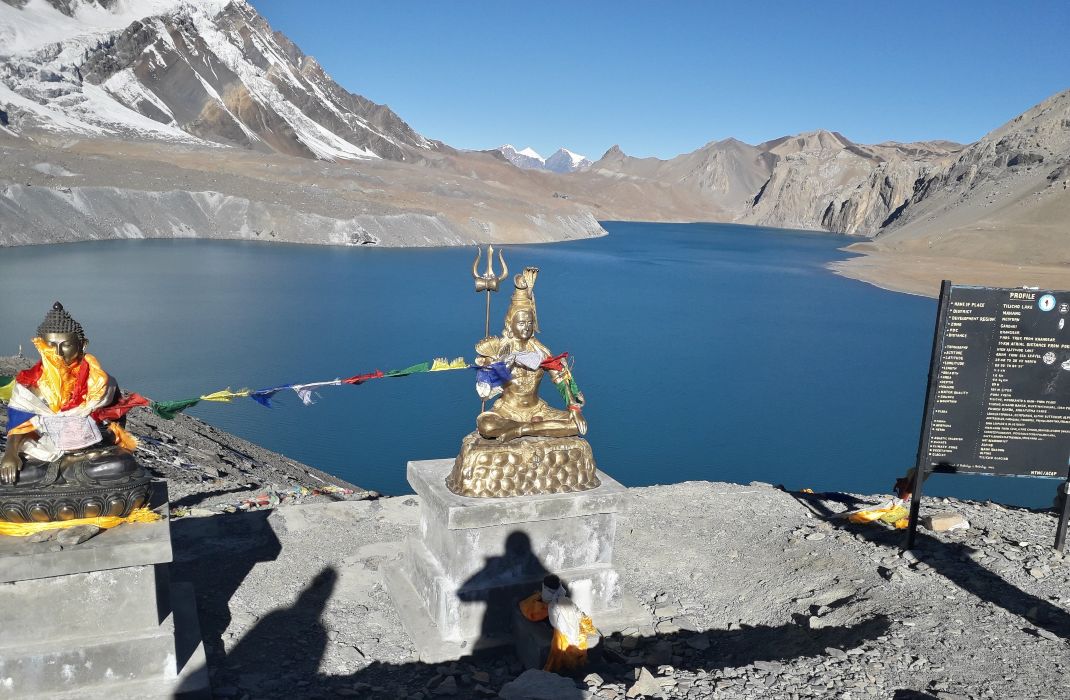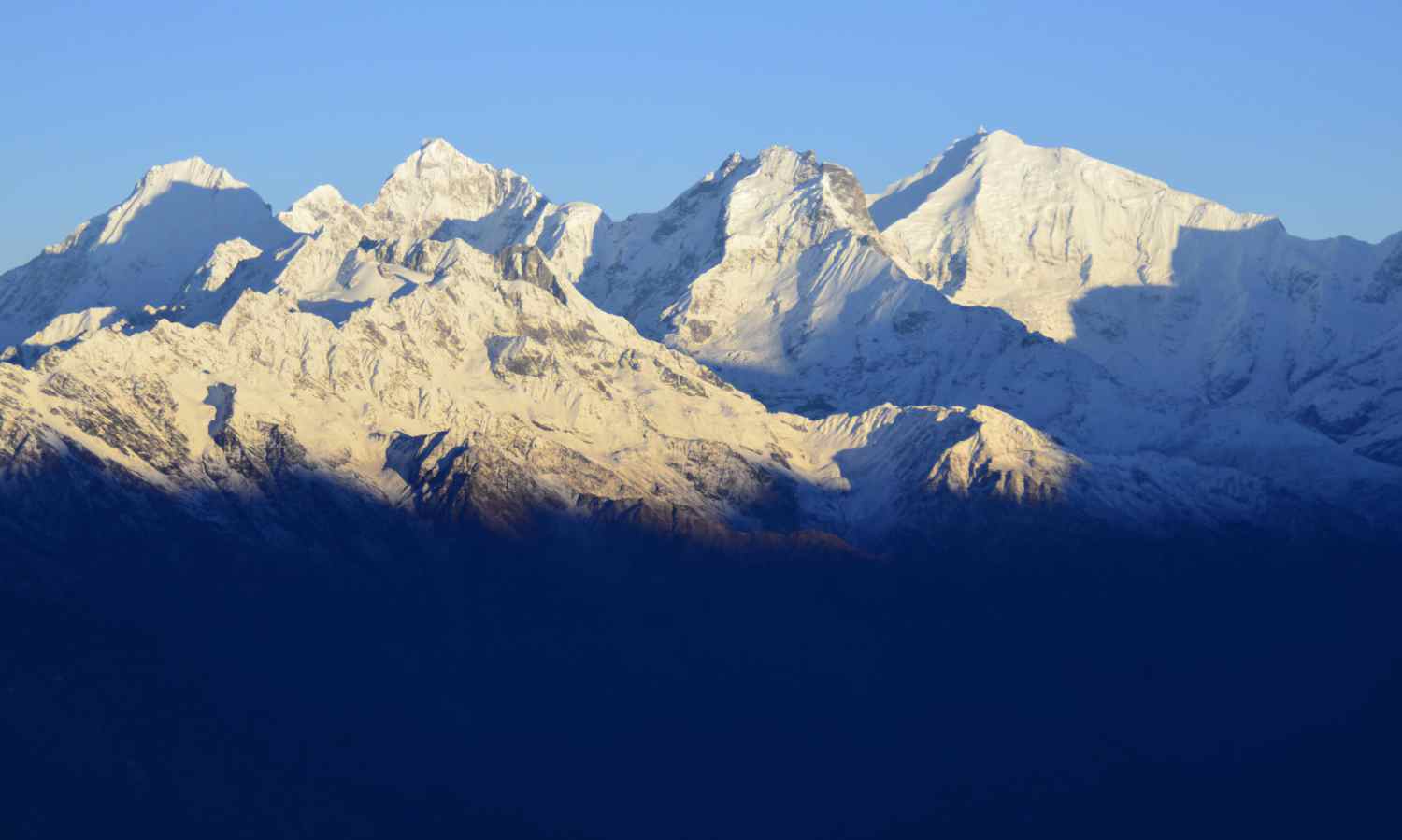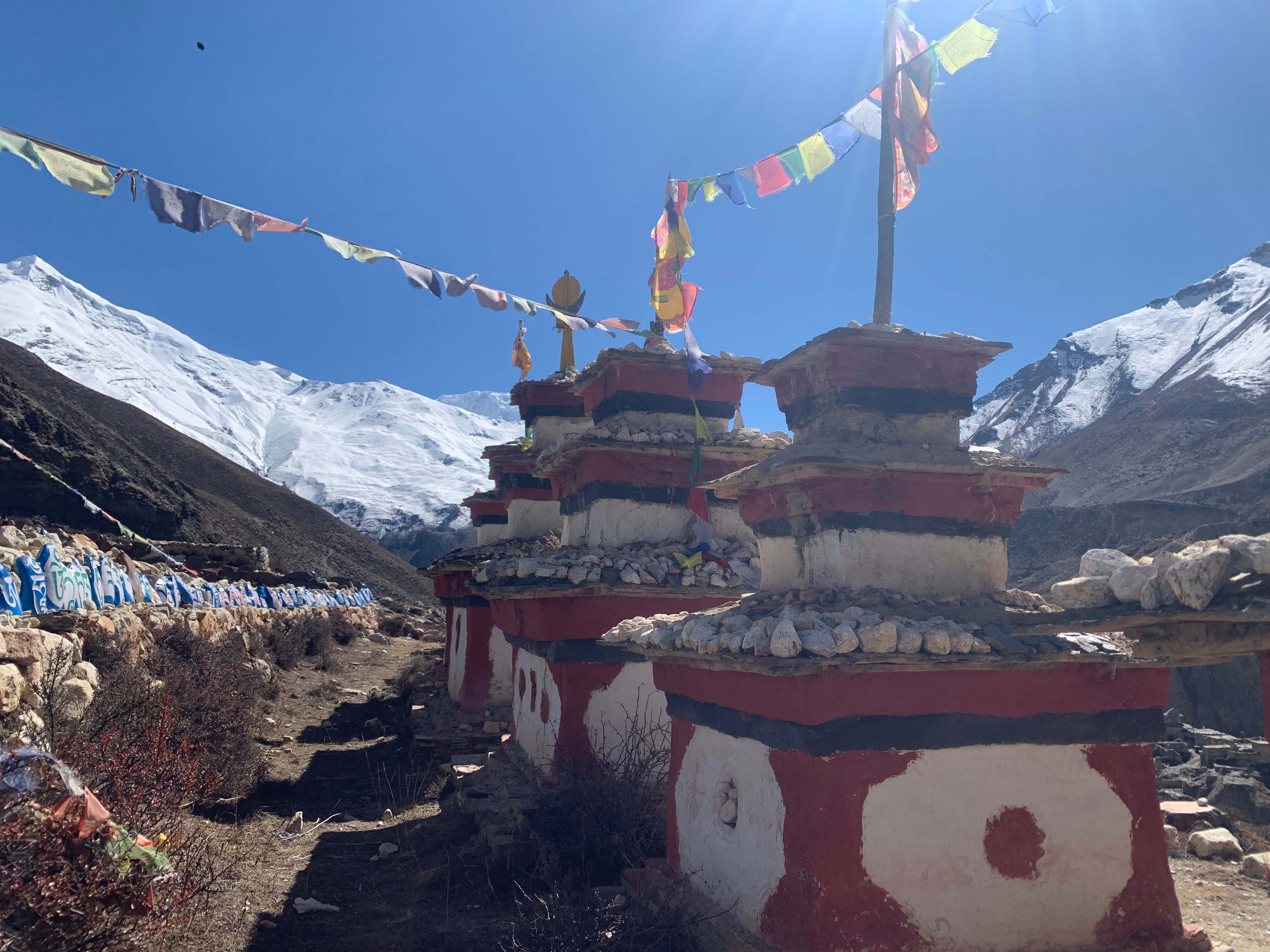Annapurna Region
The Annapurna Region is a mountainous area located in central Nepal, and it is known for its stunning natural beauty, diverse culture, and excellent trekking opportunities. The region is named after Annapurna, the tenth-highest mountain in the world, which is located within the Annapurna massif. The Annapurna Region is home to several other peaks, including Dhaulagiri, Machhapuchhre, and Manaslu, and is also the site of the world-famous Annapurna Circuit and Annapurna Base Camp treks.
The Annapurna Region is characterized by its rugged terrain, deep valleys, and towering peaks. The region is also home to a wide range of flora and fauna, including rhododendron forests, orchids, and endangered species like the snow leopard and the Himalayan black bear. The region is also home to several ethnic groups, including the Gurung, Magar, and Thakali people, each with their unique culture and traditions.
The Annapurna Circuit Trek is one of the most popular treks in Nepal and takes you through diverse landscapes, including lush forests, high-altitude deserts, and alpine meadows. The trek passes through several traditional villages, allowing you to experience the local culture and hospitality. The Annapurna Base Camp trek is another popular trek that takes you to the base of the Annapurna massif, offering stunning views of the surrounding peaks and landscapes.
In addition to trekking, the Annapurna Region is also popular for other adventure activities like mountain biking, rock climbing, and paragliding. The region is easily accessible from the city of Pokhara, which serves as the gateway to the Annapurna Region.
Popular Trekking Routes of Annapurna Region:
The Annapurna Region is known for its excellent trekking opportunities, and there are several popular trekking routes in the region. Here are some of the most popular trekking routes of the Annapurna Region:
Annapurna Circuit Trek: The Annapurna Circuit Trek is one of the most popular treks in Nepal and takes you through diverse landscapes, including lush forests, high-altitude deserts, and alpine meadows. The trek passes through several traditional villages, allowing you to experience the local culture and hospitality. The trek typically takes around 15 to 20 days to complete and offers stunning views of the Annapurna massif.
Annapurna Base Camp Trek: The Annapurna Base Camp Trek is another popular trek that takes you to the base of the Annapurna massif. The trek offers stunning views of the surrounding peaks and landscapes and takes around 10 to 12 days to complete.
Ghorepani - Poon Hill Trek: The Poon Hill Trek is a shorter and easier trek that takes you to Poon Hill, a popular viewpoint in the Annapurna Region. The trek offers stunning views of the Annapurna massif and takes around 4 to 5 days to complete.
Jomsom Muktinath Trek: The Jomsom Muktinath Trek is a popular trek that takes you through the Kali Gandaki Valley, one of the deepest gorges in the world. The trek takes you to the holy site of Muktinath and offers stunning views of the surrounding landscapes.
Upper Mustang Trek: The Upper Mustang Trek is a unique trek that takes you to the remote and isolated region of Upper Mustang. The trek offers a glimpse into the traditional Tibetan culture and takes you to ancient monasteries and traditional villages.
Nar Phu Valley Trek: The Nar Phu Valley Trek is another off-the-beaten-track trek that takes you to the remote Nar and Phu valleys. The trek offers stunning views of the Annapurna and Manaslu ranges and takes you through traditional villages and ancient monasteries.
These are just a few of the popular trekking routes of the Annapurna Region, and there are several other treks and routes to explore in the region.
Things to remember before Trekking in Annapurna Region
If you are planning on trekking in the Annapurna Region of Nepal, here are some things to remember:
Trekking Permits: You need to obtain two permits to trek in the Annapurna Region - the Annapurna Conservation Area Permit (ACAP) and the Trekkers’ Information Management System (TIMS) Card. These can be obtained from the Nepal Tourism Board in Kathmandu or from the entry points of the Annapurna Conservation Area.
Weather: The Annapurna Region experiences different weather patterns depending on the season you visit. The best time to trek is from October to November and from March to April. The weather during these months is generally dry and clear.
Altitude Sickness: The Annapurna Region has a high altitude, and it is important to take proper precautions to avoid altitude sickness. Make sure to acclimatize properly by taking regular breaks and staying hydrated.
Physical Fitness: Trekking in the Annapurna Region requires a good level of physical fitness. It is important to train beforehand and prepare yourself for the trek.
Accommodation and Food: There are plenty of tea houses and lodges along the trekking route where you can stay and have meals. However, it is recommended to book accommodation in advance during peak season.
Trekking Routes: There are several trekking routes in the Annapurna Region, and choosing the one that suits your preferences and fitness level is important. The most popular routes are the Annapurna Circuit and the Annapurna Base Camp trek.
Respect the Culture: The Annapurna Region is home to several ethnic communities, and respecting their culture and traditions is important. Dress modestly and ask for permission before taking photographs.
Packing: Make sure to pack essential trekking gear such as sturdy hiking boots, warm clothing, a first aid kit, and a good quality sleeping bag. It is also important to pack light and carry only what you need.
Annapurna Region Vs Everest Region
The Annapurna Region and the Everest Region are two of the most popular trekking destinations in Nepal. Here are some differences between the two regions:
Altitude: The Everest Region has higher altitudes compared to the Annapurna Region. Everest Base Camp is located at an altitude of 5,364 meters, while the highest point of the Annapurna Circuit is Thorong La Pass at 5,416 meters.
Scenery: Both regions offer stunning scenery, but they differ in their landscapes. The Annapurna Region is known for its lush forests, terraced farmland, and panoramic mountain views, while the Everest Region is known for its rugged terrain, glaciers, and snow-capped peaks.
Trekking Difficulty: Trekking in the Everest Region is generally considered to be more challenging than the Annapurna Region due to higher altitudes and more rugged terrain. However, both regions offer treks that cater to different fitness levels.
Culture: The Annapurna Region is home to a diverse range of ethnic communities, including Gurungs, Thakalis, and Manangis. The Everest Region, on the other hand, is primarily inhabited by Sherpas, who are known for their mountaineering skills and culture.
Crowds: The Everest Region is more popular among trekkers and tends to be more crowded than the Annapurna Region, especially during peak trekking season.
Ultimately, both regions offer unique trekking experiences and stunning scenery, and the choice between the two depends on personal preferences and fitness levels.
Benefits of doing the trek in the Annapurna Region
Trekking in the Annapurna Region of Nepal offers a range of benefits, including:
Stunning Scenery: The Annapurna Region is home to some of the world's most spectacular mountain scenery, including the Annapurna Massif, Dhaulagiri, and Machhapuchhre (Fishtail). Trekkers can enjoy panoramic views of snow-capped peaks, lush valleys, and scenic waterfalls.
Cultural Experience: The Annapurna Region is home to several ethnic communities, including Gurungs, Thakalis, and Manangis, who have their unique culture and traditions. Trekking in the region provides an opportunity to experience the local culture, interact with the locals, and taste traditional food.
Varied Trekking Routes: The Annapurna Region offers a range of trekking routes, from short treks to longer multi-day treks, catering to different fitness levels and preferences. The most popular routes include the Annapurna Circuit, Annapurna Base Camp trek, and Poon Hill trek.
Affordable: Compared to other trekking destinations in Nepal, trekking in the Annapurna Region is relatively affordable, with a range of budget-friendly accommodation and food options available along the trekking routes.
Easy Accessibility: The Annapurna Region is easily accessible by road or air, with the trekking routes starting from the town of Pokhara. This makes it convenient for trekkers to reach the starting point and begin their trek.
Wildlife: The Annapurna Region is home to a diverse range of wildlife, including snow leopards, musk deer, and Himalayan tahr. Trekkers can spot these animals in their natural habitats during their trek.
Trekking in the Annapurna Region with Nature Explore Trek offers a unique blend of adventure, culture, and natural beauty, making it a popular destination among trekkers.
Popular Trekking Routes In the Annapurna Region :

.jpg)









